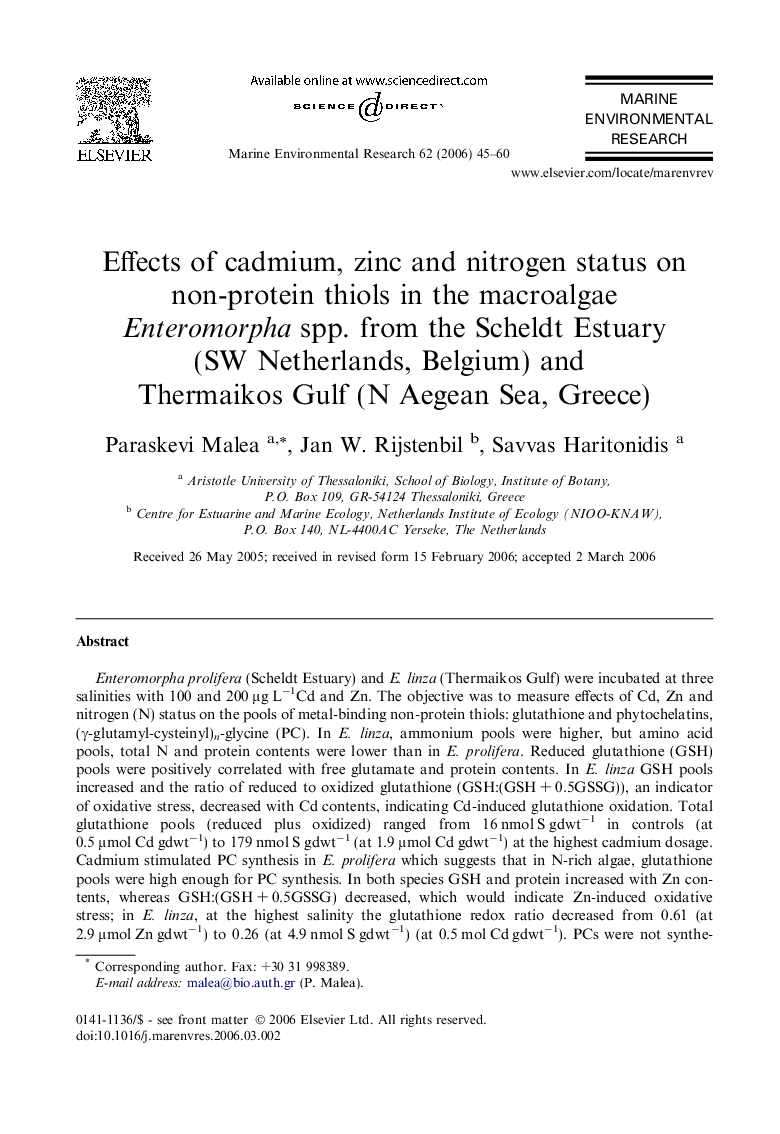| Article ID | Journal | Published Year | Pages | File Type |
|---|---|---|---|---|
| 4551925 | Marine Environmental Research | 2006 | 16 Pages |
Enteromorpha prolifera (Scheldt Estuary) and E. linza (Thermaikos Gulf) were incubated at three salinities with 100 and 200 μg L−1Cd and Zn. The objective was to measure effects of Cd, Zn and nitrogen (N) status on the pools of metal-binding non-protein thiols: glutathione and phytochelatins, (γ-glutamyl-cysteinyl)n-glycine (PC). In E. linza, ammonium pools were higher, but amino acid pools, total N and protein contents were lower than in E. prolifera. Reduced glutathione (GSH) pools were positively correlated with free glutamate and protein contents. In E. linza GSH pools increased and the ratio of reduced to oxidized glutathione (GSH:(GSH + 0.5GSSG)), an indicator of oxidative stress, decreased with Cd contents, indicating Cd-induced glutathione oxidation. Total glutathione pools (reduced plus oxidized) ranged from 16 nmol S gdwt−1 in controls (at 0.5 μmol Cd gdwt−1) to 179 nmol S gdwt−1 (at 1.9 μmol Cd gdwt−1) at the highest cadmium dosage. Cadmium stimulated PC synthesis in E. prolifera which suggests that in N-rich algae, glutathione pools were high enough for PC synthesis. In both species GSH and protein increased with Zn contents, whereas GSH:(GSH + 0.5GSSG) decreased, which would indicate Zn-induced oxidative stress; in E. linza, at the highest salinity the glutathione redox ratio decreased from 0.61 (at 2.9 μmol Zn gdwt−1) to 0.26 (at 4.9 nmol S gdwt−1) (at 0.5 mol Cd gdwt−1). PCs were not synthesized in response to Zn, which may have resulted in Zn-induced GSH oxidation. The presence of both oxidative effects (Cd, Zn) and detoxification (Cd) could be identified by observing the responses of glutathione and PC pools to metal stress.
